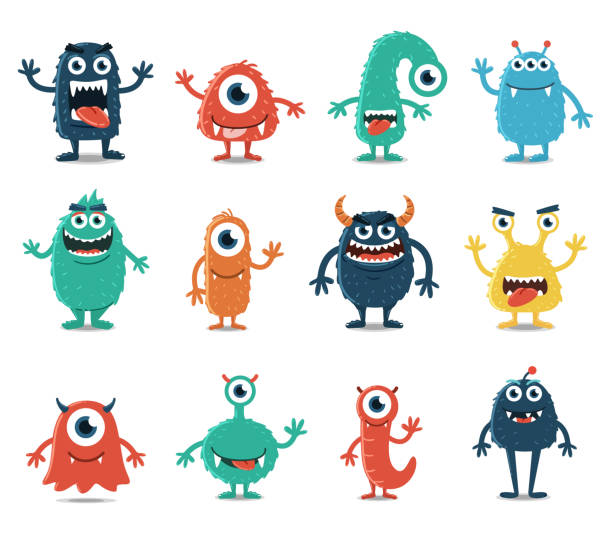The realm of cartoon monsters offers a boundless playground for creativity and expression. This article delves into the recent additions to my portfolio, showcasing monsters that blend humor with a hint of the grotesque.
Inspiration Behind the Monsters
The allure of cartoon monsters lies in their ability to evoke laughter and delight through their exaggerated features and expressions. The process of distorting their traits provides immense enjoyment and artistic fulfillment.
Featured Monsters
Carnivorous Plant
Inspired by the cult classic ‘Little Shop of Horrors,’ the concept of a giant, man-eating plant was irresistibly appealing. Emphasis was placed on the enormous mouth, teeming with sharp teeth, set atop a slender stem. The chaotic entanglement of vines and leaves at the base adds to its monstrous charm, culminating in a depiction of the plant in a cracked pot, mirroring its cinematic climax. The finalized sketch of this carnivorous plant is available for viewing in my portfolio.
Creature from the Black Lagoon
A tribute to the golden era of B-movies, the Creature from the Black Lagoon captures the intricate detail of its scales, aiming to impart a sense of depth. While the initial concept included a classic damsel-in-distress element, time constraints led to its postponement, possibly revisited in future projects.
Edward Scissorhands
An homage to Tim Burton’s genius, Edward Scissorhands stands out as a childhood cinematic favorite. The challenge of accurately depicting his distinctive costume, adorned with straps and buckles, was approached with enthusiasm. A touch of personal humor was infused by endowing his moon belt buckle with a characteristic zany grin. The completed rendition of this iconic character is showcased in my cartoon portfolio.
Comparative Analysis of Cartoon Monsters
| Feature | Carnivorous Plant | Creature from the Black Lagoon | Edward Scissorhands |
|---|---|---|---|
| Inspiration Source | Movie: Little Shop of Horrors | Classic B-Movie | Tim Burton’s Film |
| Key Characteristic | Giant mouth with teeth | Layered scales | Unique costume |
| Emotional Tone | Humorous and slightly horrifying | Mysterious and dark | Innocent and whimsical |
| Artist’s Challenge | Emphasizing mouth and vines | Achieving depth in scales | Costume detailing |
| Humorous Element | Chaotic vines and leaves | – | Moon belt buckle grin |
Key Design Elements in Cartoon Monster Creation
- Exaggeration: Amplifying features such as size, shape, and expression to enhance the monster’s comedic or horrifying aspect;
- Emotion: Utilizing expressions and posture to convey the monster’s personality and mood;
- Detailing: Focusing on textures, patterns, and accessories to add depth and interest to the character;
- Color: Choosing palettes that complement the monster’s nature, whether vibrant for humor or muted for a darker tone.
The Role of Backgrounds in Enhancing Monster Characters
Backgrounds play a pivotal role in bringing cartoon monsters to life, setting the scene and adding context to their existence. Whether it’s a dark, eerie swamp for the Creature from the Black Lagoon or a quirky, urban alley for Edward Scissorhands, backgrounds complement the monsters’ narratives, enriching their stories and immersing the viewer in their world.
Exploring the Narrative Through Monster Design
Each monster tells a story, with their design elements hinting at their origins, motivations, and the world they inhabit. By exploring the narrative through monster design, artists can create a more profound connection between the character and the audience, inviting viewers to delve deeper into the monsters’ lore and the creative mind behind them.
Conclusion
The creation of cartoon monsters provides a fascinating avenue for artistic expression, blending humor with the macabre. Each character, from the voracious plant to the enigmatic Edward Scissorhands, offers a unique glimpse into the possibilities that arise when imagination meets the drawing board. These creatures not only enrich my portfolio but also celebrate the joy of cartooning, inviting viewers into a world where laughter and monsters coexist harmoniously.
